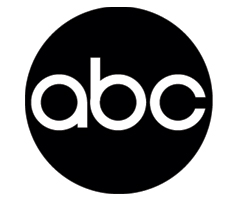 You have to give ABC a great deal of credit for turning around their prime time fortune last season. With big hits like "Desperate Housewives" and "Lost," ABC resurrected the network.
You have to give ABC a great deal of credit for turning around their prime time fortune last season. With big hits like "Desperate Housewives" and "Lost," ABC resurrected the network.
How did they do it? Much of the credit goes to their on-air promos, and the strategies they employed to schedule them. First, they narrowed their promotional scope to shows they felt had the best chance of winning – notably "Housewives" and "Lost." While this irked some ABC’s other producers, the decision to focus their promos clearly worked.
Like the other major networks, ABC believes strongly in the power of running promos during prime time, airing somewhere between 600-800 ratings points during the 8-12 weeks leading up to each show’s debut.
The other strategy is airing the same basic promos for programs, as opposed to mixing up a variety of different creative approaches. The philosophy, of course, is to hit viewers with the same consistent messages in order to generate sampling.
Think about how their tactics compare to ours. Think about the frequency and message focus you use during your prime time programming – your morning shows. In so many market visits we make stations fail to utilize their big morning shows as cross-marketing vehicles. In a time when so many stations can no longer rely on outside marketing, making the best use of valuable on-air promos is not just smart – it’s essential.
- Media And Technology In 2025: Believe It Or Not! - April 18, 2025
- In Radio, You Just Never Know - April 17, 2025
- The Secret To Making A Great Podcast (And Great Radio) - April 16, 2025




As imaging director for a CHR in New Orleans, the point you’ve made here truly interests me. In essence, it’s Marketing 101 that a consistent and repeated message creates a “common understanding” of the promotion. However, here’s where I am torn in my own daily work. Many times, our station is promoting, on-air through produced pieces (before stopsets, etc), two, and sometimes three different promotions each week.
If we are only pushing ONE event that week, we usually will end up with three different creatively-focused promos built around that one event airing over the week.
Are you suggesting that this could be detrimental? Some might say that the school of “ONE PROMO, UNCHANGED, EVERY TIME, ALL WEEK” is the optimal structure, while others believe it is “old school”…and that the attention and demand for unique content of today’s audience requires we have constantly “fresh” sounds to the promos.
If ABC had success running promos for “Lost” and “Desperate Housewives” repeatedy to drive home the message, is that NECESSARILY the reason for their success? Or were they just good shows? And, with TV having an intensely different viewing habit with its audience, can we necessarily apply the same to radio?
These are all up for interpretation, of course.
However, I’m incredibly fearful that with the approach we use right now at our station, with multiple promos running in multiple ways each week, we may be causing a “clusterf**” of image.
What is your opinion on this? There IS a reason I’m not the PD, but I deeply care about the success and performance and mindset of our listeners in response to our on-air package, and would love to know your stance, and personal opinion, on a sound promotional imaging approach as related to frequency/creative options.
Thanks!
Fred this is a great point. I once saw a study performed for public radio. Public radio stations, being what they are, typically run two promos per week for each of 50 shows. A very smart fellow got one station to flip that ratio — just promote two shows 50 times each for a period of time. As you might imagine, after years of stagnation, the numbers for those two shows started to rise.
I don’t know what the optimal number is…but if a network or a radio station attempts to promote too many things, they just end up promoting nothing. Great post, Fred.